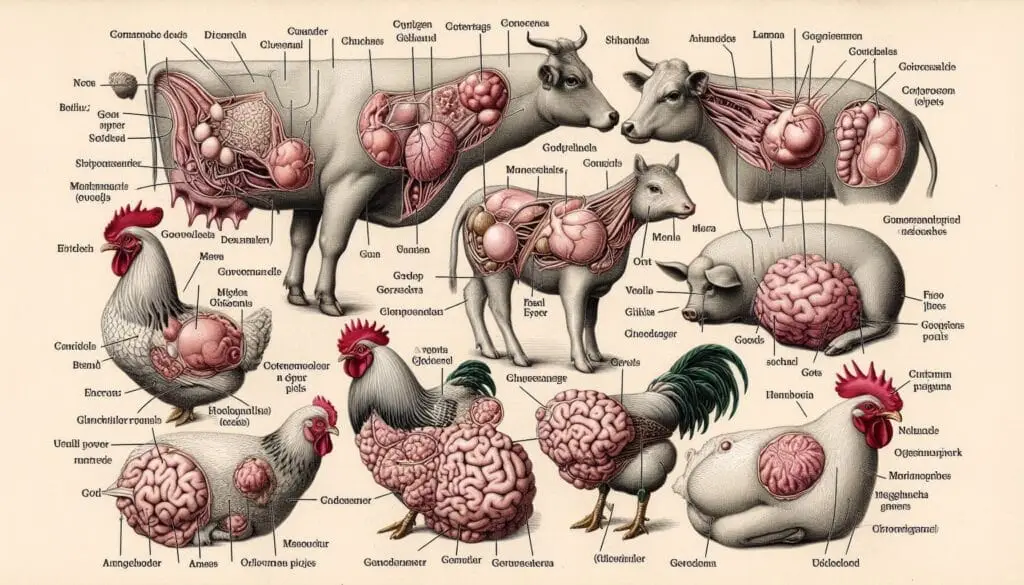Animal Behavior and Physiology

Introduction
The study of animal behavior is a fascinating field that combines elements of biology, psychology, and ecology. Understanding the physiology of behavior in animal ecology reveals how physiological mechanisms shape behaviors that are crucial for survival and reproduction. This article will explore the physiological aspects of behavior, focusing on social interactions, movement patterns, and ecological adaptations.
What is Physiology?
Physiology is the branch of biology that deals with the functions and processes of living organisms. It examines how different systems within an organism work together to maintain life. In the context of animal behavior, physiology helps us understand how internal processes influence actions and interactions with the environment.
Why Study Behavior in Ecology?
Studying behavior within an ecological framework allows us to see how animals adapt to their surroundings. Behavioral ecology looks at the evolutionary basis for behaviors and how these behaviors affect survival and reproduction. By understanding the physiological underpinnings of these behaviors, we can gain insights into how animals respond to environmental changes.
Physiological Mechanisms Influencing Behavior
Hormonal Influences on Behavior
Hormones play a critical role in regulating behavior. For example, stress hormones like cortisol can affect an animal’s ability to forage or interact socially. Research shows that elevated cortisol levels can impair cognitive functions, leading to poor decision-making (see more on stress effects on wildlife).
Neuroendocrine Systems
The neuroendocrine system connects the nervous system with hormonal responses. It influences behaviors such as mating, aggression, and parental care. For instance, oxytocin is often called the “love hormone” because it promotes bonding and social interactions (learn more about oxytocin’s role).
Metabolic Processes Affecting Behavior
Metabolism influences energy levels and endurance, which are crucial for various behaviors like foraging or migration. Animals with higher metabolic rates may need to feed more frequently or may be more active than those with slower rates. This can affect their social dynamics and habitat use.
Energy Allocation
How animals allocate energy impacts their behavior significantly. For example, during breeding seasons, some species may prioritize mating over foraging due to increased energy demands (see details on energy allocation strategies).
Social Behavior and Group Dynamics
The Role of Physiology in Social Structures
Social structures in animal populations often depend on physiological traits. For instance, body size and strength can determine hierarchy within groups. Larger individuals may dominate access to resources or mates.
Fission-Fusion Dynamics
In species like dolphins or elephants, social groups may change size and composition frequently—a phenomenon known as fission-fusion dynamics. Physiological factors such as stress levels or reproductive status can influence these dynamics (read more about fission-fusion societies).
Communication Among Animals
Effective communication is vital for social interaction. Animals use vocalizations, body language, and chemical signals to convey information about food sources or threats. The physiology behind these communication methods varies widely among species.
Chemical Communication
Many species rely on pheromones for communication. These chemical signals can indicate territory boundaries or reproductive status (explore more on chemical communication).
Movement Patterns in Animal Behavior
Physiological Factors Influencing Movement
Movement is essential for finding food, escaping predators, and locating mates. Physiological traits such as muscle composition and cardiovascular efficiency directly impact an animal’s movement capabilities.
Locomotion Types
Different species exhibit various locomotion types—running, swimming, flying—each requiring specific physiological adaptations. For example, fish have streamlined bodies that reduce drag in water (discover more about fish locomotion).
Dispersal Mechanisms
Dispersal refers to the movement of individuals away from their birthplace or established home range. This process is often driven by ecological pressures such as resource scarcity or habitat changes.
Physiological Stress Responses
Physiological stress responses can trigger dispersal behaviors. For instance, when resources become scarce, animals may experience heightened stress levels that prompt them to seek new habitats (learn about stress-induced dispersal).
Adaptations to Environmental Changes
Physiological Adaptations to Climate Change
As climate change alters habitats, animals must adapt physiologically to survive. Changes in temperature can affect metabolic rates and reproductive cycles.
Phenotypic Plasticity
Phenotypic plasticity refers to an organism’s ability to alter its physiology or behavior in response to environmental changes (read more about phenotypic plasticity). This adaptability is crucial for survival in fluctuating environments.
Migration as an Adaptive Strategy
Migration is a common adaptive strategy among many species facing seasonal changes or resource availability shifts. Physiological changes often accompany migration patterns.
Energy Management During Migration
Migratory animals must manage their energy efficiently during long journeys. Fat storage plays a vital role in this process (see insights on migration energy management).
Conclusion
The physiology of behavior in animal ecology provides essential insights into how animals interact with their environment and each other. Understanding these relationships helps us appreciate the complexity of ecosystems and the challenges animals face today.
More from Veterinary Physiology:
https://wiseias.com/tissue-growth-factors-animals/
https://wiseias.com/hormone-action-in-animals/
https://wiseias.com/control-of-hormone-secretion-in-animals/






Responses